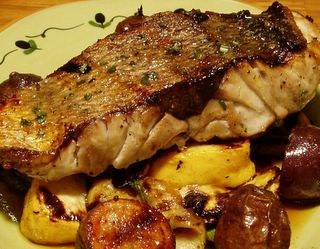

Salt and both sides of the bluefish and let it sit for up to 1 hour. If fish is thicker on one end than the other, cut in half crosswise, separating head and tail ends. Bluefish are also caught by hook and line, and I understand that they put up quite a fight and are “all teeth.” More than one sports-fisherman has been bitten by a bluefish that they’ve landed into the boat. Because of the small size of gillnets used for this species, there is little bycatch-trapping of other species-associated with bluefish-ing. The thinner piece will cook faster and can be removed from heat before the thicker one.Īccording the New England Aquarium in Boston, bluefish was overfished in the past, but current management practices and catch limits are allowing populations to rebuild rapidly. Although we didn’t think to do this, I recommend cutting the fillet in half crosswise into head (thicker) and tail (thinner) sections. It shows up sometime in early summer, and according to our local fishmonger at Cape Tip Seafoods it will be headed south soon.Īllow least ½ lb.

On the Cape, it’s here when the ocean temperature is above about 50 degrees F.

Avoid it if you can.īluefish is an open water species found throughout the world, except on the US West Coasts. It’s best to use a chimney with paper in the bottom to start the charcoal, but “Matchlight” charcoal can be tolerable as long as you allow all the lighter fluid to burn off. He barbequed over a charcoal fire in a small Weber. Also we didn’t have any spicing on hand, except a lemon. Bruce prepared the bluefish without extra spicing, so we could fully appreciate the bluefish flavor.


 0 kommentar(er)
0 kommentar(er)
